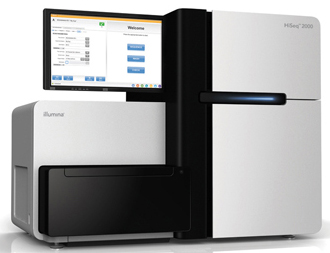Microbiology with ultra-high-throughput sequencing
We are using the Illumina high-throughput sequencing platform to sequence whole microbial genomes and transcriptomes. This technology generates hundreds of millions of short reads per run, reaching multiple giga bases of sequence per day. The Illumina technology enables us to study the evolution of bacteria, discover phenotype altering mutations, and document dynamic evolutionary processes.Bacterial whole genome evolution
Using high throughput sequencing technology, we studied transfer of genetic material between bacetria (Sorek et al, Science 2007), documented processes of genome shrinkage in bacteria (Moran et al, Science 2009), and found how bacterial genomes evolve in response to phage attacks (Avrani et al, Nature 2011). We also develop methods for accurate detection of individual mutations in genomes using short-read sequencing technologies (Wurtzel et al, 2010).
RNA-mediated regulation in bacteria studied with RNA-seq
We employ RNA-seq to perform gene expression studies in bacteria and archaea and to understand their complex transcriptomes. Although prokaryotic transcriptomes were considered simple until recently, RNA-seq studies now revolutionize our understanding of the complexity, plasticity and regulation of microbial transcriptomes (Sorek & Cossart, Nature Reviews Genetics 2010).
| Our lab uses the Illumina technoogy to discover new small non-coding RNAs (sRNAs) and understand their biological functions. It is gradually becoming clear that microbial genomes are populated by functional sRNAs, generally 50-500bp long. These sRNAs have been shown to regulate various biological processes including quorum sensing, pathogenesis, stress response, and more. While ~80 sRNAs were characterized in E. coli through extensive studies, very little is known on sRNAs in other prokaryotes. Our data shows extensive transcription of non-coding RNAs from intergenic regions (Yoder-Himes et al, PNAS 2009) and hundreds of cis-antisense RNAs (asRNAs) encoded in bacteria and archaea (Wurtzel et al, 2010; Wurtzel et al, 2012a; Wurtzel et al, 2012b). We recently defined the "Excludon", a novel antisense-based regulatory structure in bacteria, which is a chimera between antisense RNA and mRNA (Nature Reviews Microbiology, 2013). Advanced RNA-seq methods, such as RIP-seq and bisulfite-seq are used in the lab to study RNA modifications in humans (Nature, 2012), bacteria and archaea (PLoS Genetics 2013). We also discovered curious cases of circular RNAs expressed in archaeal genomes (Danan et al, 2012), and are interested in new roles for riboswitches in regulating molecular processes in bacteria (Science 2014). We are also developing new technologies for accurate measurements of RNA in microbes. We developed term-seq, a method that allows single-base resolution mapping of RNA 3' ends in bacteria and archaea. We showed that term-seq can identify new riboswitches and attenuators that regulate antibiotic-resistance genes in the human microbiome (Dar et al, Science 2016). We also used term-seq to understand signals of transcription termination in archaea (Dar et al, Nature Microbiology 2016).
|
 |
| At right: The Illumina HiSeq 2000 at the Weizmann Institute of Science |